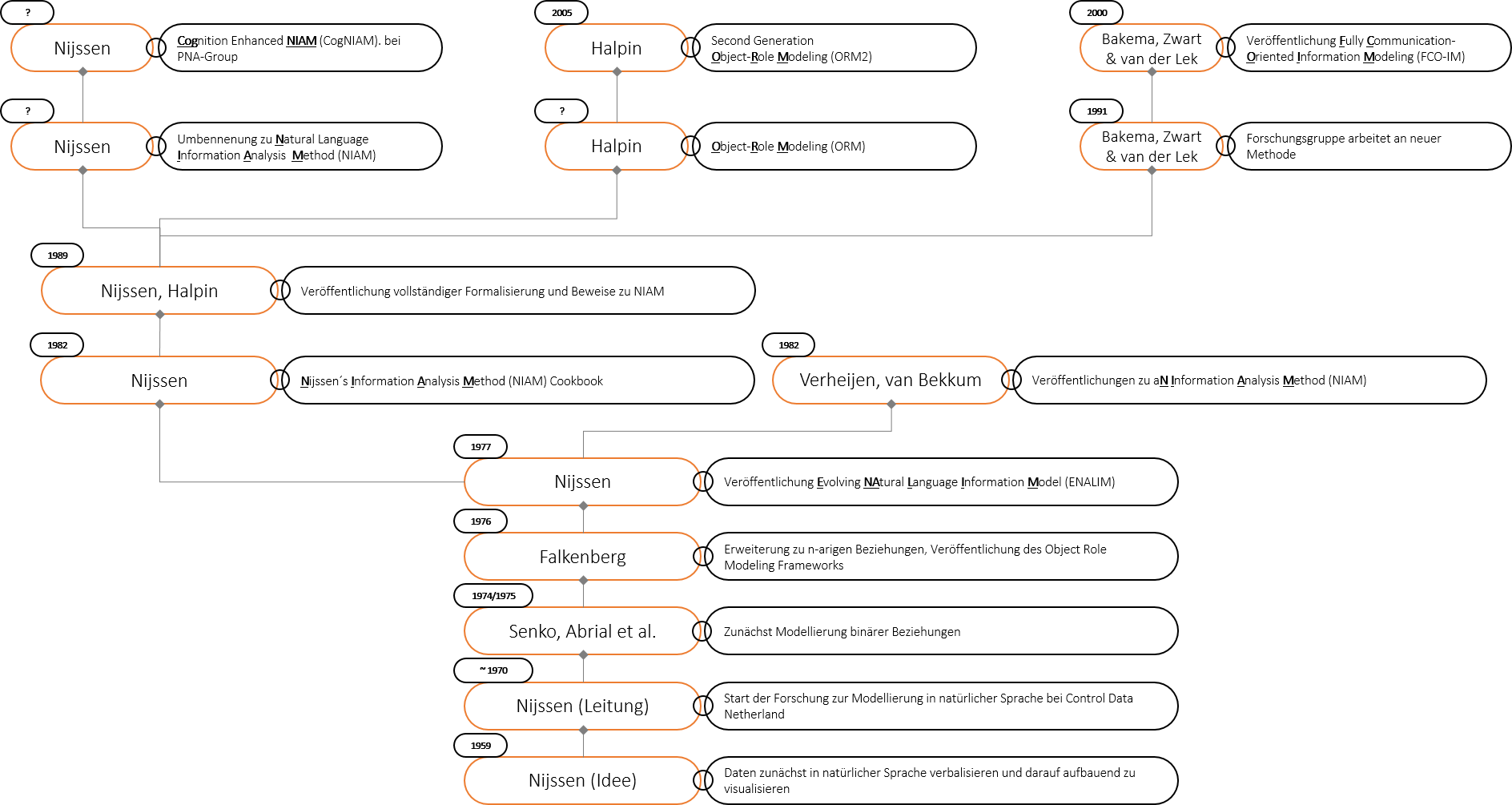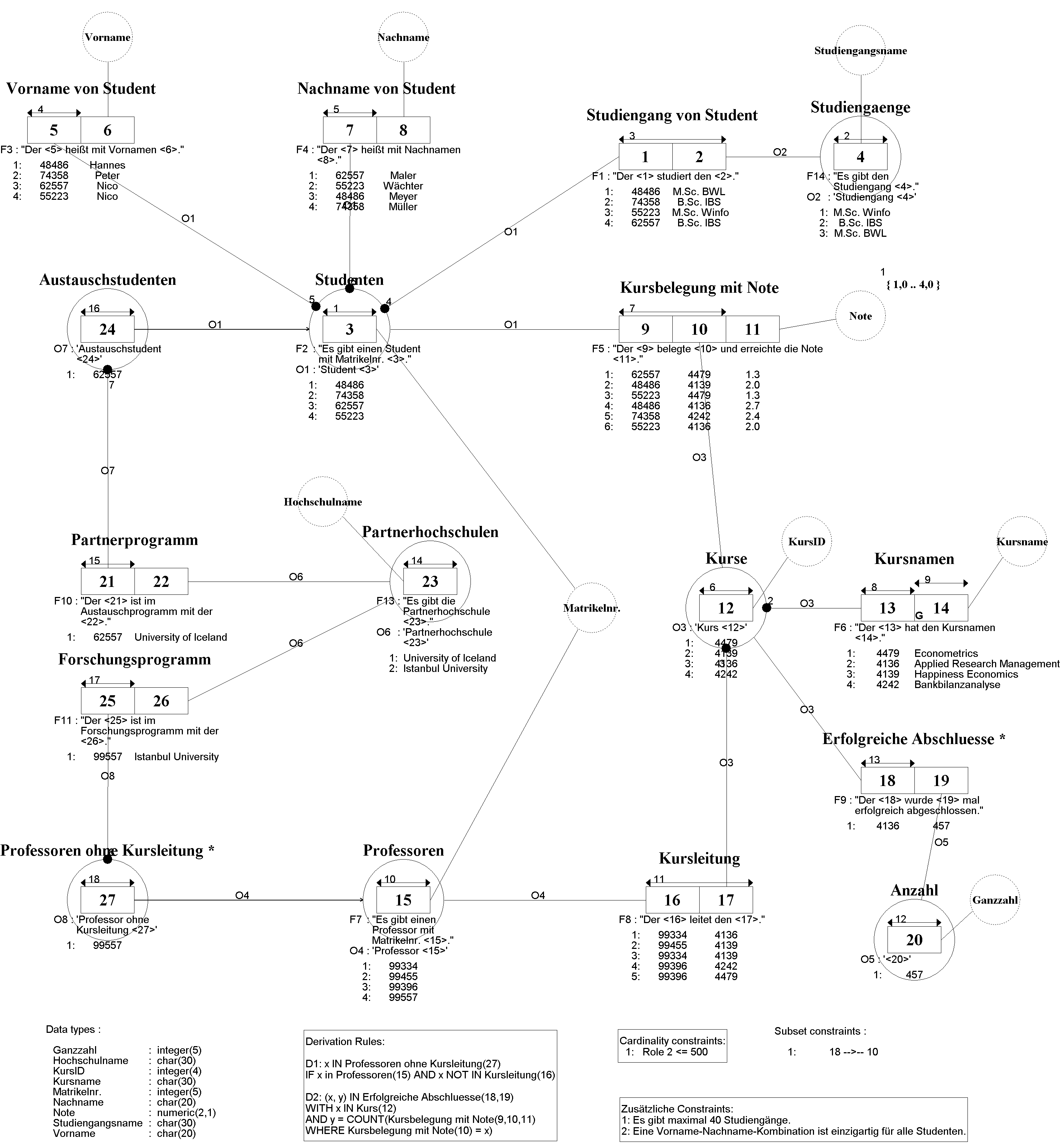Months ago I talked to Stephan Volkmann, the student I mentor, about possibilities to write a seminar paper. One suggestion was to write about Information Modeling, namely FCO-IM, ORM2 and NIAM, siblings of the Fact-Orietented Modeling (FOM) family. In my opinion, FOM is the most powerful technique for building conceptual information models, as I wrote in a previous blogpost Sketch Notes Reflections at TDWI Roundtable with FCO-IM.
And guess what, Stephan appreciated the idea so much that he agreed to it and his professor did, too. Since then, over the past months, Stephan made a huge effort to discover the history behind FOM methods, to describe the different approaches and finally compare them amongst each other. We determined what literature is available and which siblings are part of the FOM family.
To be honest, it wasn’t that easy to sort out at what time which branch of the FOM family was born or further developed. Many books later we were surprised how far back this supposedly brand new method goes back in time: until the late 50’s of the last century. Everything started with Gerardus Maria (Sjir) Nijssen and the idea of fact based modeling at the Royal Dutch Air Force. Research on these topic started in the early 70’s, supervised by Nijsen at the Control Data Netherland.
Over the years, the methods were developed further, and new branches appeared and disappeared. In the end, we couldn’t determine all release dates like the first occurrences of CogNIAM or ORM by Halpin. That’s why some of the fields in the history of FOM contains question marks.

The English written abstract of the seminar paper gives a short introduction of the content:
Fact-Oriented Modeling (FOM) stands for a family of fact-oriented conceptual modeling methods. FOM facilitates easier communication about the conceptual model between the modeler and the domain expert by verbalization of concrete examples in the language of the domain expert, a design process as a guide for creating the model and the focus on elementary facts. Automatically generated documentation in natural language makes it easier for the domain expert to validate the model. These advantages result in a better conceptual model than in traditional modeling methods. In this report, the history and the idea of FOM are presented. The most popular methods in this family are Cognition Enhanced Natural Language Information Analysis Method (CogNIAM), Second Generation Object Role Modeling (ORM 2) and Fully Communication Oriented Information Modeling (FCO-IM). These are explained in basic terms and illustrated by examples. Subsequently ORM2 and FCO-IM are compared with respect to their methodology, model elements and tool support.
I’m very proud that Stephan is so keen to share his seminar paper (German only) with you on my blog! You can download the first few pages here:
If you are interested in reading the complete seminar paper, please register here. This will allow you to download Stephan’s seminar paper immediately, and for free:
Dear readers: if you can help us to fill the gaps in history, please leave a comment!
So long,
Dirk

